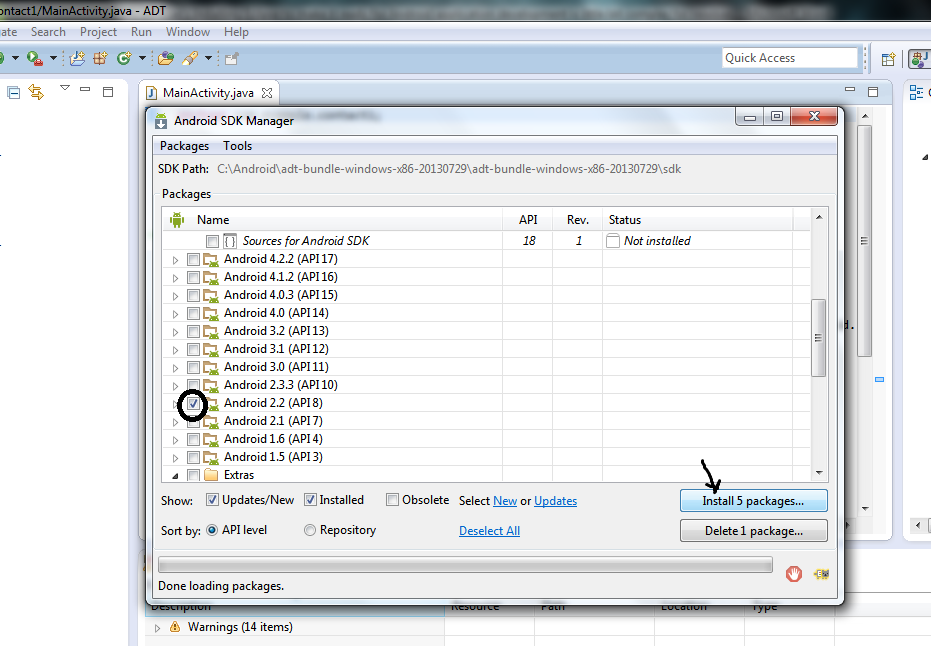Android Application Development Lesson – 1 – Installing the IDE
Installing Eclipse to make it ready for Android application development is little bit tricky for newbies! Here’s a full step wise guide on how to setup Eclipse. I hope for a series of tutorials from scratch. So this article might help as the starting step for beginners. I start with Eclipse just to make you understand the basic structure of a stand-alone android project. We will step into Android Studio in our Third lesson.
Installing Eclipse, Software Development Kit (SDK), and Android Development Tools (ADT)
Step 1: Download the latest java jdk with respect to your OS version (32 bit / 64 bit) and install it.
http://www.oracle.com/technetwork/java/javase/downloads/index.html
Step 2: Download Eclipse IDE. (There are many versions of Eclipse available for download such as Eclipse JUNO, Elipse Helios etc.. ITS upto you downloading the Eclipse IDE).
But I prefer you to Just stick with me guys . The best way not to mess up with Eclipse is to download the ADT BUNDLE so that there is no need of importing each things (SDK, ADT) into Eclipse IDE . The ADT BUNDLE itself comes with everything together as a bundle focusing on Android development.
Here you can download adt bundles directly:
windows 32 bit: download from google repository
windows 64 bit: download from google repository
Step 3: Once you download it, extract it to your local drive. There’s no setup files or anything. You can just run the IDE from the eclipse launcher icon.
The real installation is within your IDE. Follow the below steps to complete our Setup.
i) Open Eclipse -> Help -> check for updates. And update eclipse IDE first.
ii) After update is over it will ask for restart and now click yes. Now Eclipse closes and starts again automatically.
iii) Then we must setup the ADT path within Eclipse. For that go to
Help -> Install new software -> Add -> in the Url type https://dl-ssl.google.com/android/eclipse -> click next -> Finish -> again Eclipse will get restarted.
iv) Then we must setup the SDK path within Eclipse. For that go to
Window -> preferences -> Android -> In the “SDK location” select the sdk folder. The SDK folder is within the downloaded ADT BUNDLE itself. Choose that folder and click ‘ok’.
v) Then we must update SDK . For that click on SDK MANAGER icon

vi) Now SDK MANAGER shows up. In that TICK on “ ANDROID 2.2(API 8) ” and click Install packages button to Install that version. We Install that version because if we develop older android version based applications ,it can be run in any older (like Gingerbread) as well as new Android OS versions(like Marshmallow, Nougat, Oreo.. etc) . But if we develop applications for latest android versions like 4.3 then it might not work in some older mobile that runs on Android 2.1 and so .

Step 4: That’s it. Everything is done!! Now you can start developing applications!!
In our next lesson, we will learn setting up Environmental variables, what it is, Why we need it and How it works. And we will begin developing our first application.
Note : We will work with Eclipse IDE until our First app and shall migrate to Android Studio from there. We started with Eclipse IDE because this gives an overall idea on project structure more than Android Studio IDE. In my following posts I will teach you everything in Android from the beginning till end about developing Applications and Games.
Please Stick with me Guys. It’s not so difficult as you think !! As we go through a few tutorials you will get the idea.. and when we reach a level of completing the course and if at that moment you just look back you would say “Hooo I’m on a huge steps up to a level of developing own applications and selling them on the google play market !! “ Just Stay with me Guys ! We are gonna launch new applications !


